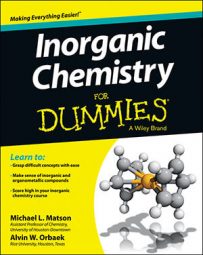There are many words and terms that are specific to chemistry, in this case inorganic chemistry. Here is a list of some of the most common and most interesting terms you need to know.
Born-Haber cycle: An important thermodynamic calculation that is used to quantify the energy involved in making ionic compounds.
covalent bond: The sharing of electrons between to atoms, covalent bonds are typically quite strong. They can be single, double, or triple bonds. Covalent bonds have directionality.
Fajan's rule: Used to determine qualitatively the degree of covalent bonding in ionic materials. Cations experience higher covalent character according to increasing charge density. In anions, the degree of covalent bonding increases with increasing polarizability of the ion.
Hess’s law: For any given chemical reaction, the total energy required to complete the reaction is the same regardless of the number of steps required to complete the reaction. Forms the basic understanding required to complete a calculation using the Born-Haber cycle.
hybrid: Used to describe the mixing of molecular orbitals (s, p, d, f) such that they hybridize to form equivalent lone pairs and bonding pairs orbitals. s-p hybridized orbitals are common for many organic carbon compounds.
ionic bond: An ionic bond is formed when there is a transfer of electrons from one atom to another atom. It’s based on electrostatic or columbic interactions.
kinetics: A study of the rate of a reaction. It’s affected by conditions such as temperature, concentration, and the use of a catalyst.
Lewis structure: Structural representation of how the valence electrons are located about a molecule or atom, it’s used to show the presence of bonding pairs and non-bonding lone pairs.
oxidation state: Also known as the oxidation number, a measure for how many electrons an atom needs to become a neutral species. Electrons can be added, or removed to reached the neutral atom. In a chemical reaction if the oxidation number increases, the element is reduced.
periodic table: A table of the elements that are ordered according to a successive increase in the atomic number.
resonance effects: Used to describe the situation when a chemical species donates or withdraws electrons through orbital overlap with neighboring pi bonds. In resonance processes, electrons are delocalized and the energy of the electrons are stabilized.
thermodynamic control: Reactions that create products with the lowest energy and most stable product are said to be controlled by thermodynamics. Not all reactions create the most thermodynamic product; some are controlled by kinetics instead.
valency: A measure of the number of electrons in the valence shell of an atom. It highlights the capacity of an atom for undergoing a reaction, but it’s used much less often compared to the oxidation number.

